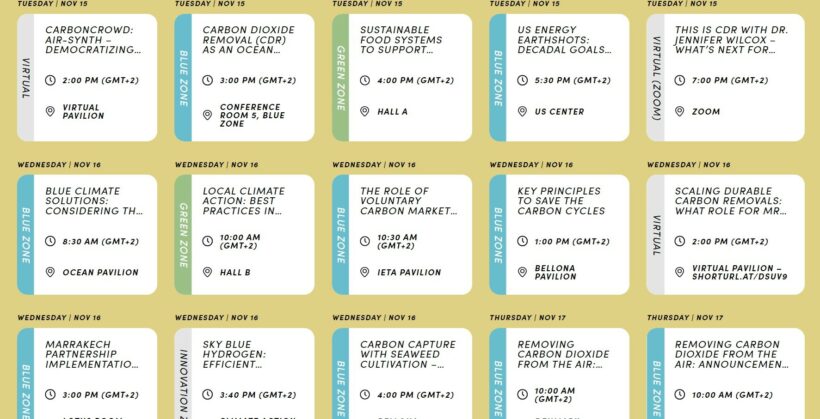In the months since the report issued by the Intergovernmental Panel on Climate Change (IPCC) in early 2022, carbon dioxide removal (CDR) has increased in prominence as a climate solution. The IPCC report made it clear that, without a significant amount of CDR, the world will be unable to stay within the politically-derived target of 1.5 degrees celsius of warming.
Even if the world achieves net zero greenhouse gas emissions by 2050, we will still overshoot the 1.5 degree target without also removing a significant amount of carbon dioxide and other greenhouse gasses that have already been belched into the atmosphere.
CDR differs from carbon capture in an important way. Carbon capture is the process by which today’s emissions are captured before being released into the atmosphere; picture a big filter on top of the smokestack of a fossil fuel power plant. Carbon dioxide removal, by contrast, specifically removes CO2 that has already been released into the atmosphere, sometimes known as “legacy emissions.”
CDR can be accomplished by a number of methods, both technological and nature-based. One well-known technological method of CDR is Direct Air Capture, such as the Orca facility operated by Climeworks in Iceland. Put simply, Direct Air Capture sucks carbon dioxide from the air using a series of industrial fans. It then separates the carbon and deposits it underground, where it is stored durably for centuries.
Nature-based CDR methods abound. The most obvious nature-based CDR method is trees. However, the lifespan of a typical tree is relatively short, and trees are increasingly subject to climate change-fuelled disasters such as wildfires and floods. Other nature-based methods to remove carbon dioxide from the atmosphere include mangroves, kelp, and regenerative agriculture practices, to name just a few.
There are currently around 1 trillion tons of excess CO2 in the atmosphere, which has led to the current levels of somewhere between 1.1 and 1.2 degrees celsius of warming. Experts estimate that 100 gigatons (100 billion tons) or more of CO2 will need to be removed from the atmosphere, together with urgent emissions reductions, in order to stay within the 1.5 degree target.
At 1.5 degrees of warming, however, climate chaos will be even more severe than what we are currently experiencing. According to Brad Ack, Executive Director of Ocean Visions, “1.5 degrees is not safe for the ocean. 1.5 degrees was a political agreement, not a scientific one. What we need, in fact, is a goal to restore the climate.”
Climate restoration is the goal to restore atmospheric greenhouse gas concentrations to pre-industrial levels. The primary pathway of achieving climate restoration is through large-scale greenhouse gas removals, together with rapid and significant reductions in greenhouse gas emissions. While climate restoration would not fully restore ecosystems to their pre-industrial state, due to species extinctions and irreversible tipping points, it poses humanity’s best chance to re-create a climate in which humans and other living things can survive and thrive.
At COP27, conversations around carbon dioxide removal ranged from full-throated support for CDR solutions to cautious optimism that some solutions may be truly impactful at scale to calls for further research, development, and (eventually) deployment.
This trend is thanks in part to the significant growth in the coalition of NGOs, companies, investors, academics, and elected officials paying attention to CDR. Nowhere is this more apparent than in the “Carbon Removals at COP” coalition. The mission of this partnership is to introduce people “to what is happening in the world of carbon removals – the science, the technology, the people, places, motivations and approaches that are driving the evolution of carbon removals today and working to scale these innovations for a better future tomorrow.”
Regardless of whether one’s goal is to remain under 1.5 degrees of warming or to achieve climate restoration, one thing is clear: carbon dioxide removal will be an ongoing, and essential, part of the solution.
A snapshot of the dozens of in-person and virtual CDR events listed on the CDR at COP website.










